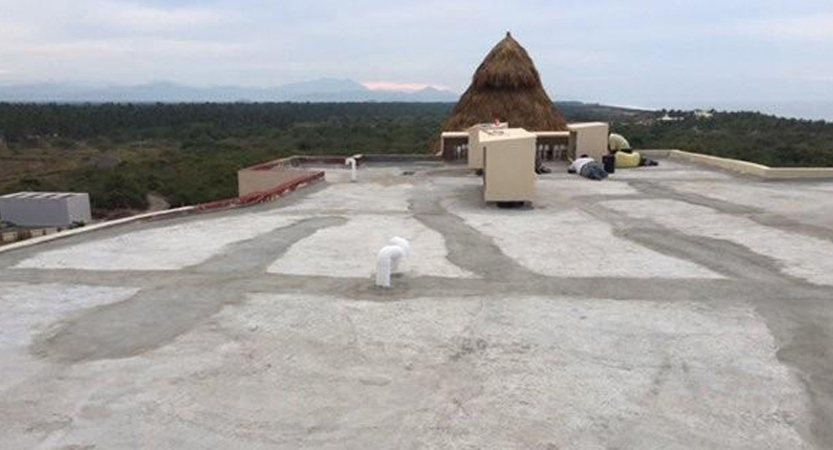Waterproof, durable, and resistant to UV rays, EPDM roof sealant has been a staple in the roofing industry for over 40 years. However, if you want to get the maximum lifespan from this product, it should be installed properly, and you need to know a few things about the process.
Tools and Techniques
You can use paintbrushes, rollers, and sprayers to apply EPDM roof sealant. But it pays to use high-quality tools and to use them the right way.
With a roller, make sure to choose one that has a medium to long nap. You also need to ensure that it’s heavily coated in sealant before applying it to the surface. Light coats don’t work very well. It’s also important to realize that because EPDM roof sealant is thicker than paint, you won’t roll it on the same way. It’s closer to spreading it than rolling it.
If you decide to use a sprayer, you should choose a particular type. It must be airless, and it should have a minimum of 3,000 psi. Do not try to use a pump-style sprayer or a low-performance sprayer with less psi.
You can also use a broom to apply EPDM roof sealant. A bristle broom or brush should be used in the same way – with long, even strokes that allow you to apply smaller amounts of EPDM roof sealant evenly across the roof surface.
Also, remember that ambient temperature plays a role here. We recommend applying roof sealant between 50 degrees and 90 degrees in full sun.
Base Coats Matter
In most cases, you don’t necessarily need a base coat. However, it could be beneficial even if it’s not technically required. A base coat helps you ensure better adhesion between the EPDM roof sealant and the roof’s surface.
We recommend a three-step process. First, apply a base coat across the area where you intend to place the sealant. Next, apply a middle coat (the first coat of EPDM sealant). Let that cure, and then apply a second coat of sealant. Again, a single coat is technically all you need, but applying multiple coats requires only a little more time and can provide substantially better adhesion.
EPDM roof sealant can be used on almost any type of roof, but they’re not all created equal. Each type of material requires a different volume of sealant per coat. Applying a base coat will help change that, but you’ll need to use the right amount for that base coat. For instance, metal roofs usually require one gallon per 100 square feet. TPO roofs, on the other hand, come in around 1.25 gallons per 100 square feet. Built-up roofs require even more, around 1.5 gallons per 100 square feet.
Use EPDM Roof Sealant on Seams, Cracks, and Seals
Most roofs have seams and cracks. Those are weak points that can allow water to penetrate under the roof and even into the ceiling. Use EPDM roof sealant to cover all cracks, seams, and penetration points. We recommend using it around all protrusions, as well, including HVAC systems, vents, skylights, and more. This will help ensure that your roof is well-sealed against moisture incursion.
In Conclusion
EPDM roof sealant is durable, easy to apply, and usable with most types of roofing materials and systems. Following the tips we’ve discussed in this post will help ensure that you have the best possible experience and that you can seal your roof completely. If you’re unsure if you’re ready for this type of project, we recommend hiring a professional.


